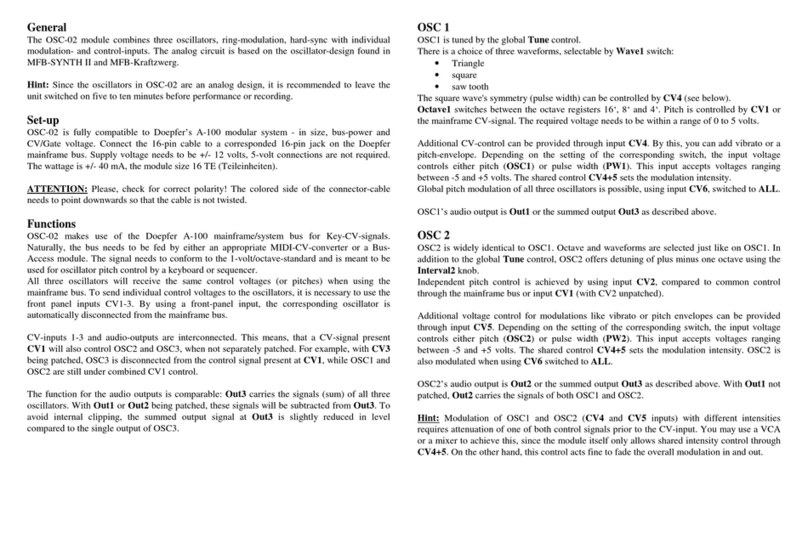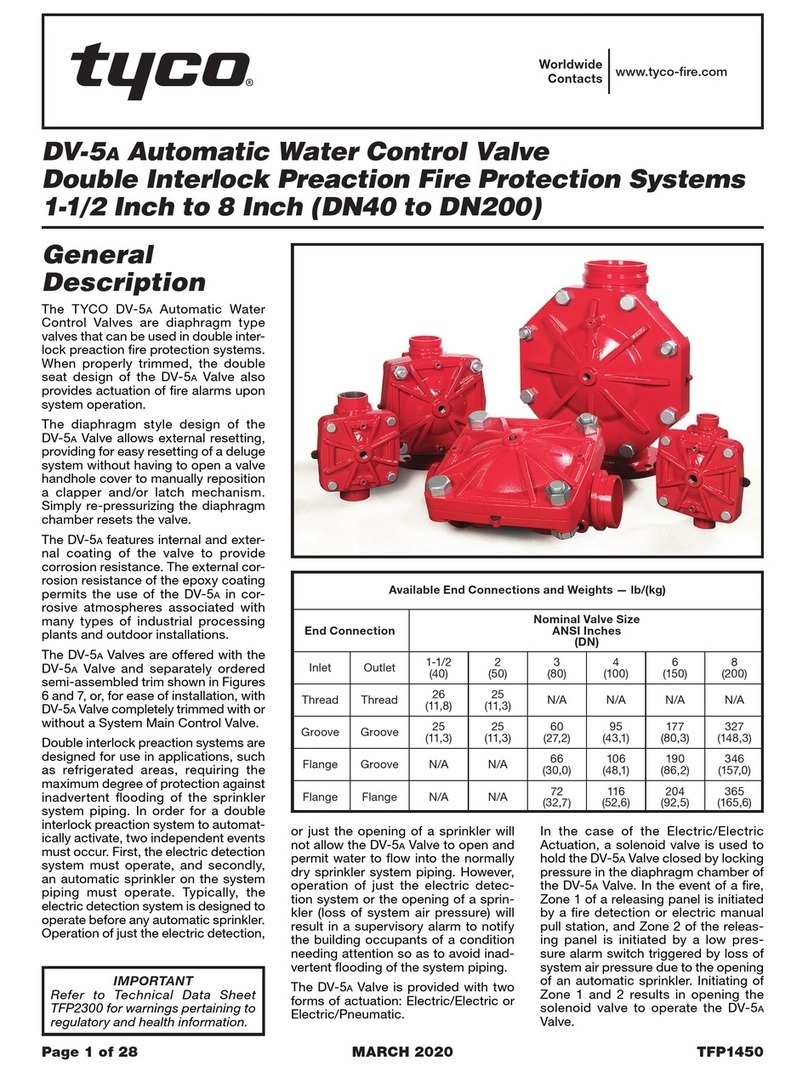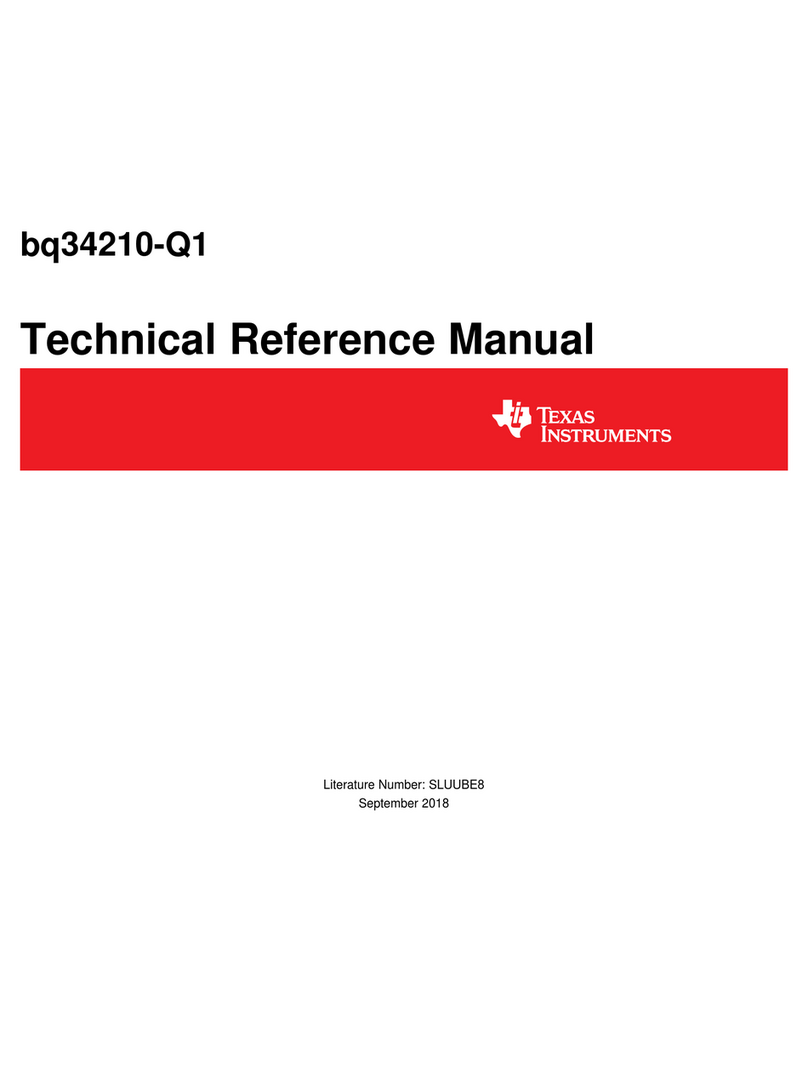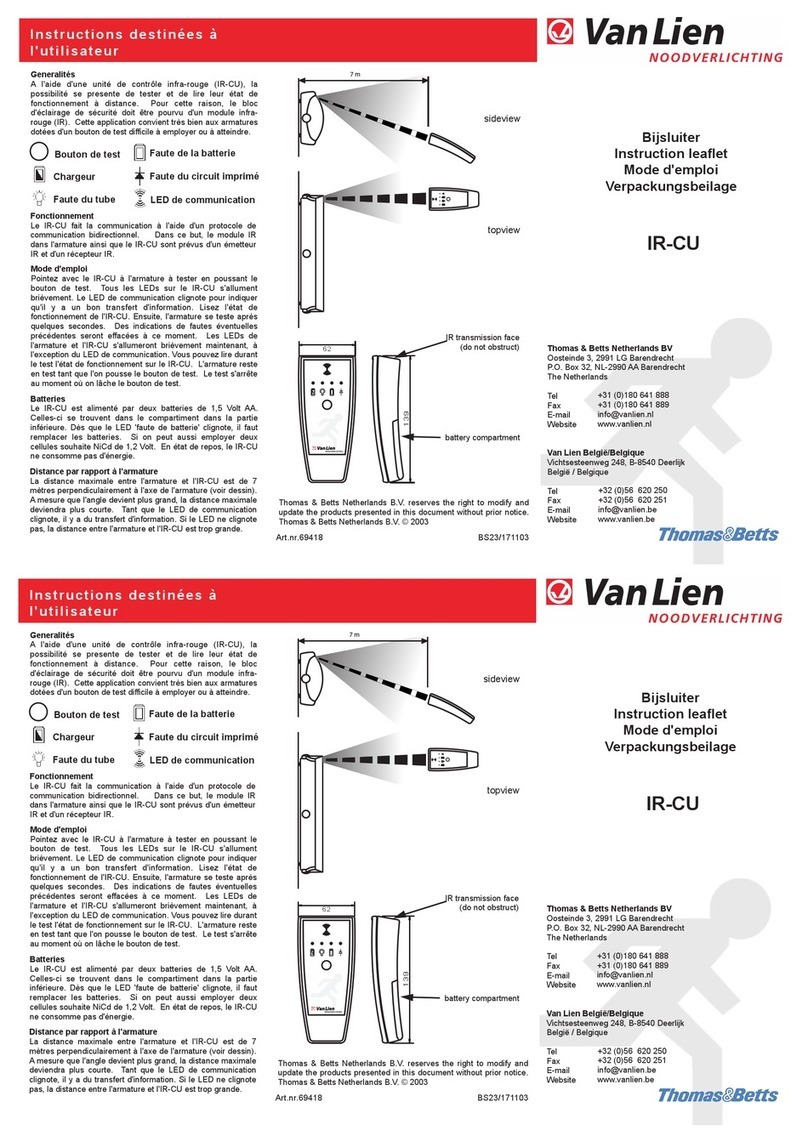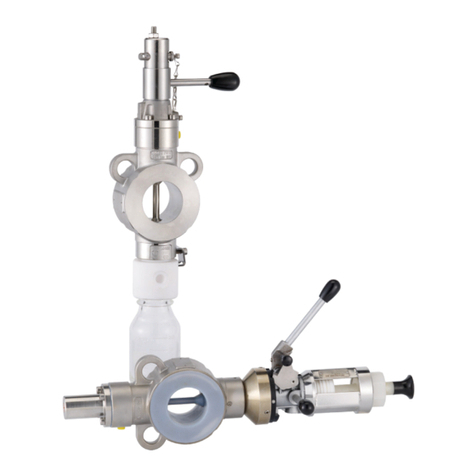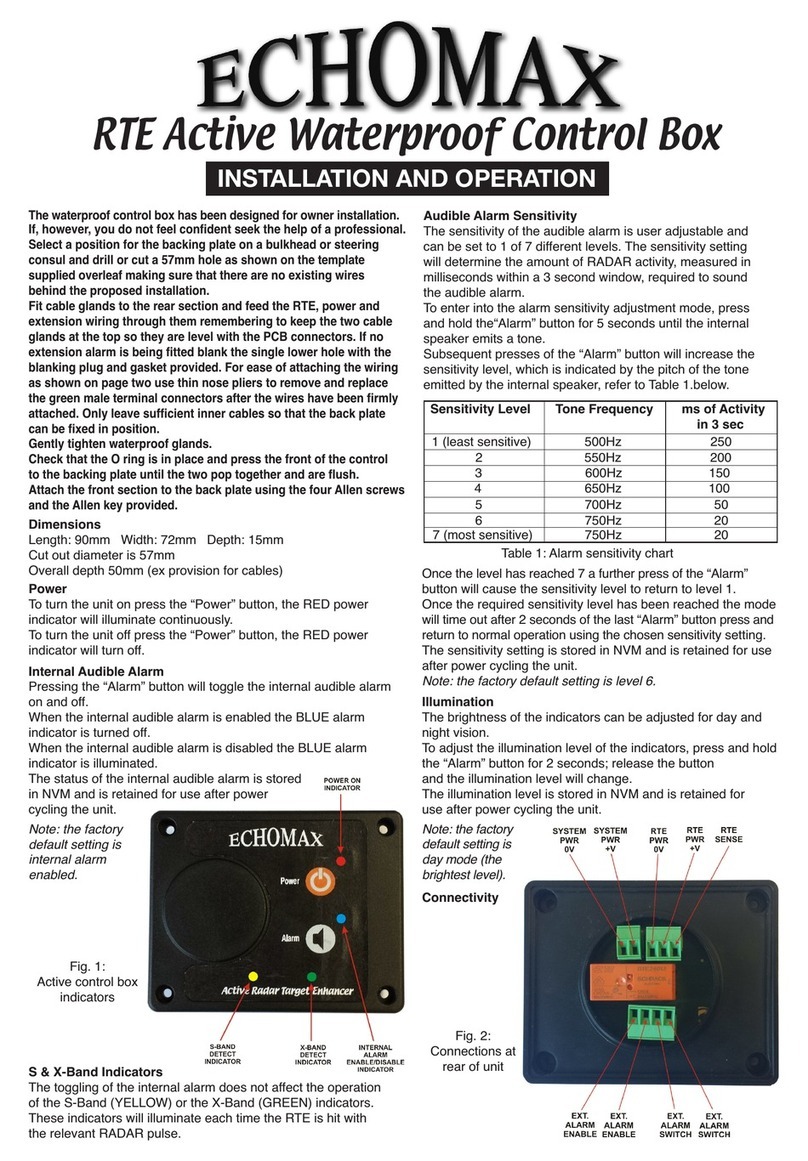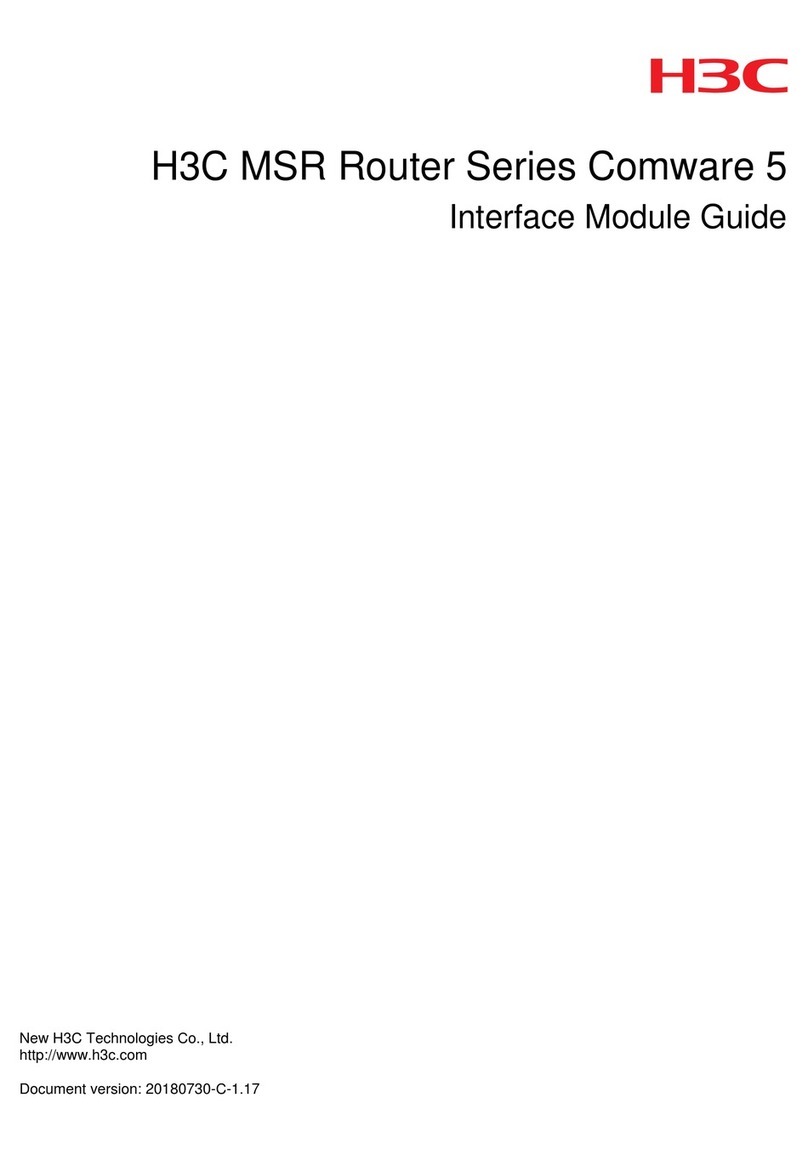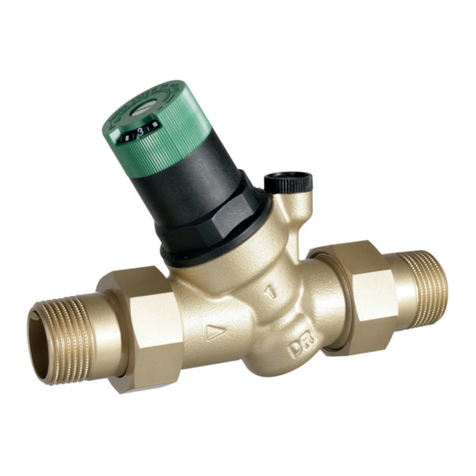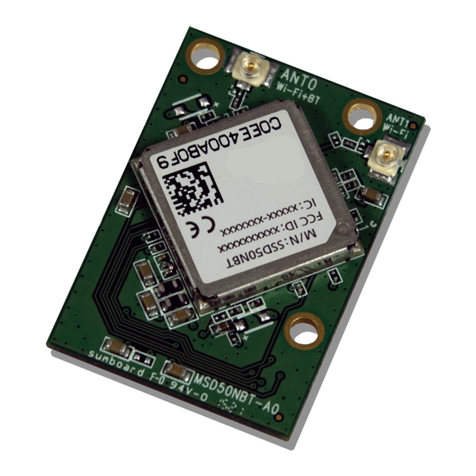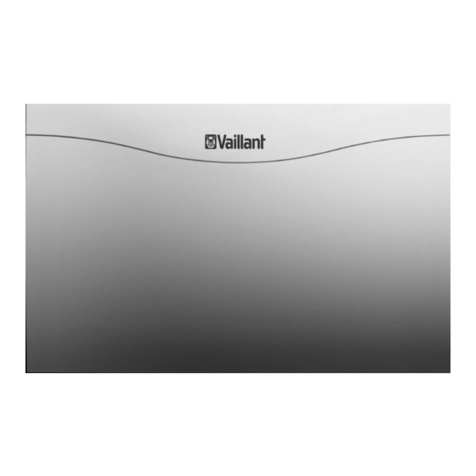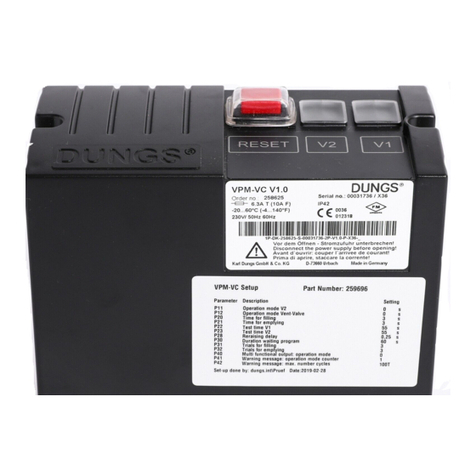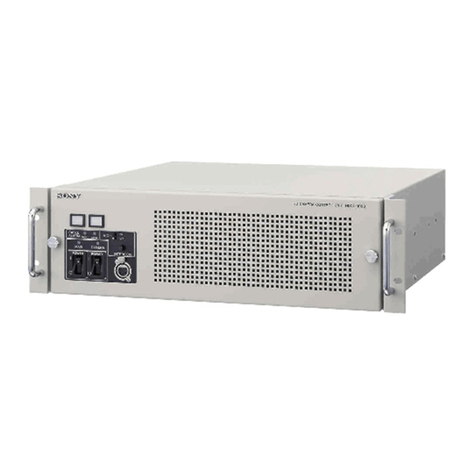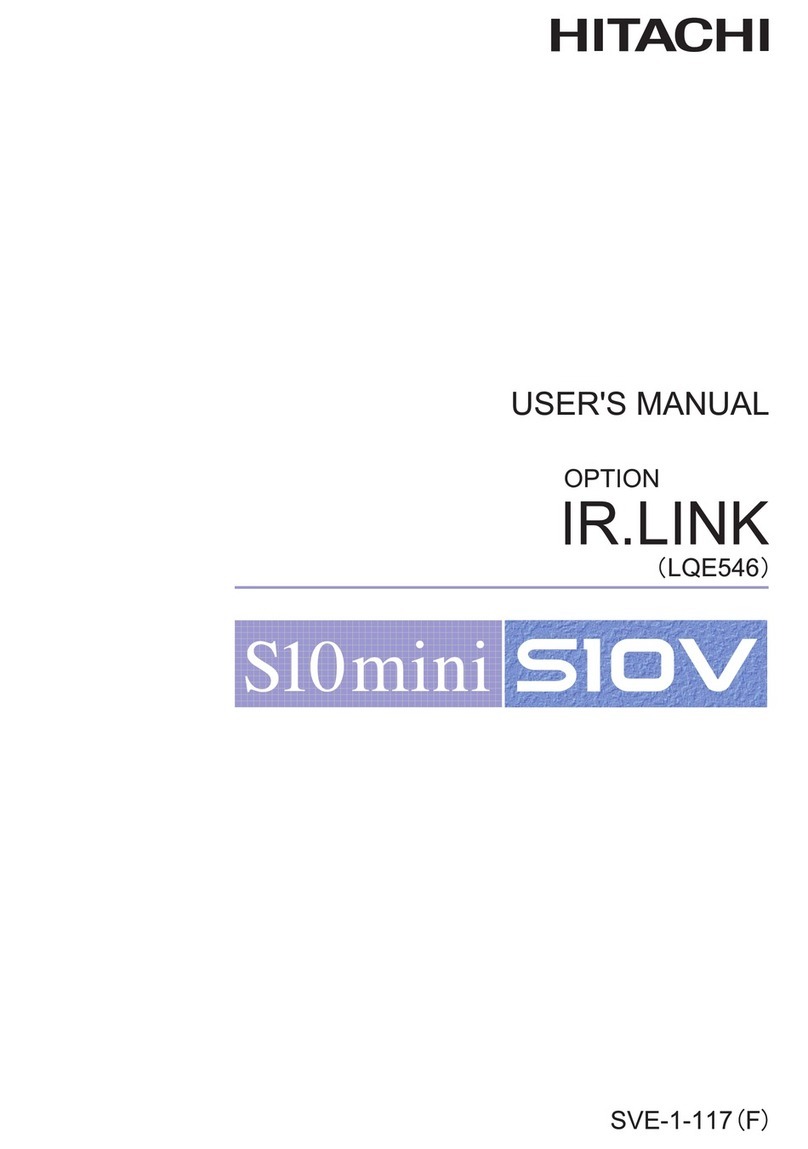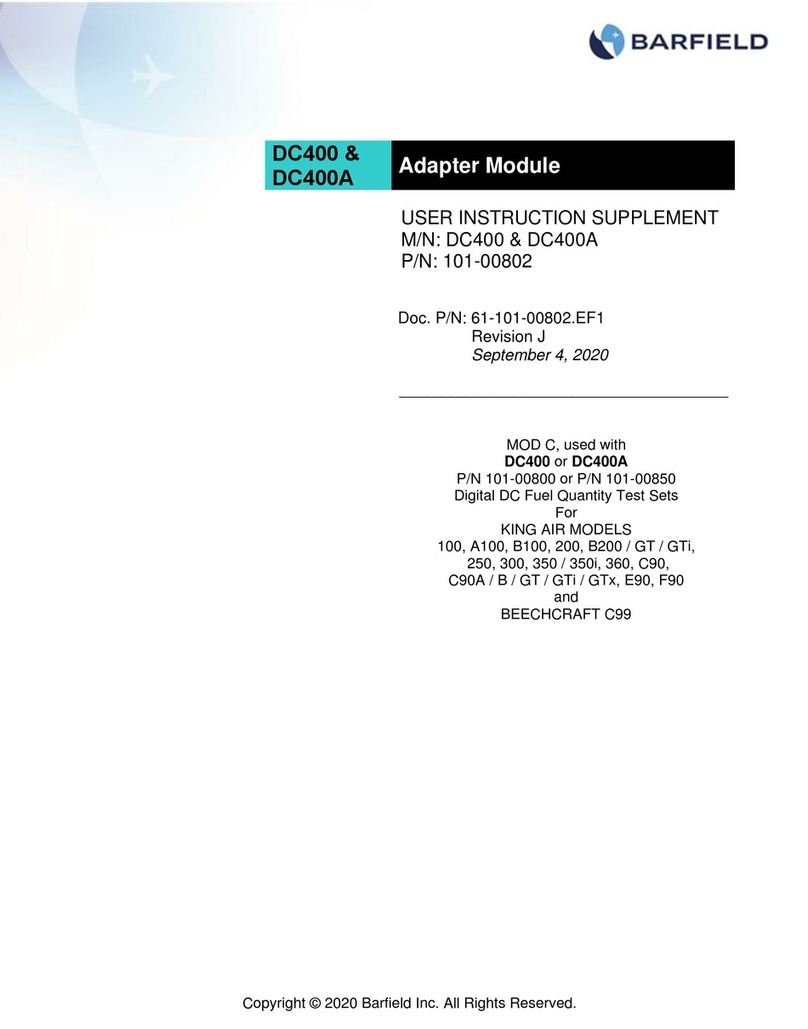VentiAir MicroMax370 User manual

Operation instructions
MicroMax370 control unit for rotary heat exchanger

2
Contact:
VentiAir s.r.o.
Adolfovice 512
790 01 Bělá pod Pradědem
CZ –Czech Republic
IČ: 06935320 DIČ: CZ06935320
tel.: +420 602 500 287
The device is manufactured in accordance with the European standard EN1886, EN13053
This documentation must always be handed over to the customer!
In case of non-compliance with the conditions stated in this documentation, VentiAir s.r.o.
reserves the right to refuse the warranty.
Version 01/2022

3
1CONTENTS
1 Contents ...........................................................................................................................................3
2 Installation instruction .....................................................................................................................4
3 Mounting..........................................................................................................................................4
4 Safety instructions............................................................................................................................5
5 Description of Functions ..................................................................................................................5
6 Technical data ..................................................................................................................................5
7 Functions..........................................................................................................................................6
8 DIP switch.........................................................................................................................................7
9 Operational indications....................................................................................................................7
10 Alarms...........................................................................................................................................7
11 Settings via potentiometer...........................................................................................................8
12 Push button..................................................................................................................................8
13 Connection diagram .....................................................................................................................9
14 Connections..................................................................................................................................9
15 Checks before powering up the control unit .............................................................................10
16 Putting the equipment info operation.......................................................................................10
17 EMC installation .........................................................................................................................11
18 EMC gland...................................................................................................................................11

4
2INSTALLATION INSTRUCTION
Warning indication The control unit may only be used in perfect technical condition. Any damage
that may affect safety must be dealt with immediately.
Maintenance/Repairs The function of the control unit should be checked regularly.
Troubleshooting and repairs may only be performed by trained personnel.
Electrical safety regulations must be met.
Disposal/Recycling When replacing components or when the control unit in its entirety need
replacing, please follow the advice below:
The aim should always be maximum possible recycling of raw materials, with
minimum possible environmental impact.
Never dispose of electrical components with ordinary waste, always use the
designated collection points.
Disposal should be as environment-friendly as the technology allows in terms
of environmental protection and recycling.
3MOUNTING
Mounting hole 5 ⌀
Mounting hole 5 ⌀

5
4SAFETY INSTRUCTIONS
The following symbols and references will be used in this description. These important instructions
apply to personal protection and technical safety during operation..
“Safety instructions” refers to instructions whose specific intent is to avoid the risk of
personal injury and to prevent damage to equipment..
Danger! Electrical current to electrical components! Note: Switch off main power
before removing the cover. Never touch electrical components or contacts while
main current is switched on. Risk of electric shock, resulting in serious injury or
death. Residual voltage remains in connected terminals even after main power has
been switched off.
5DESCRIPTION OF FUNCTIONS
The MicroMax370 is part of a range of control units adapted, with the necessary additional
functions, for optimum control of rotary heat exchangers. The series consists of four sizes,
MicroMax, MicroMax180, MicroMax370 and MicroMax750. All of the control units drive
three-phase induction motors with associated gearing, the control unit designation denotes
motor output. All control units have an input signal of 0-10 V..
MicroMax370 is designed for wheels up to 3500 mm with a wheel speed of max 12 rpm. If a
faster wheel speed is necessary, rotor diameter should be reduced.
Heat exchanger rpm and thus thermal efficiency are governed by the control unit so that
wheel speed is proportional to the input signal from the control centre.
MicroMax370 has a customisable threshold of 0-2 V.
MicroMax370 has adjustable boost function.
MicroMax370 has a rotation monitor (magnet mounted on the wheel with associated
magnetic sensor) and built-in cleaning function. The functions can be disconnected via DIP
switches.
MicroMax370 starts automatically following voltage drop-out and resets all
alarms on restart.
The motor should not be disconnected from the control unit while under
load.
6TECHNICAL DATA
Connection voltage 1x230-240 V +/-15 %
50/60 Hz
Power input, max. 650 W
Input current, max. 2,8 A
External fuse, max. 10 A
Output voltage* 3x0-230 V
Output frequency 5-100 Hz

6
Min. frequency (Fixed) 5 Hz
Max. frequency 40-100 Hz
Motor output, max. 370 W
Motor current 1,9 A
Overload 2 min/30 min 3,5 A
Internal fuse ** 4 AT
Acceleration time (Fixed) 30 s
Retardation time (Fixed) 30 s
Ambient temperature, non-condensing -25 - +45 OC
Protection form IP54
Weight 1,1 kg
Dimensions, HxWxD 198-165-60 mm
*) Exact value cannot be obtained with a digital measuring instrument
**) The fuse protects both motor and electronics
7FUNCTIONS

7
8DIP SWITCH
Cleaning function Cleaning function set to ON position.
When the wheel has stopped for 30 minutes, the cleaning function is
activated and the wheel rotates at minimum rpm for 10 seconds.
Rotation monitor Rotation monitor set to ON position.
High speed*) The wheel rotates at the set maximum rpm when the switch is set to
ON. After a test run, make sure the DIP switch is set to OFF..
Low speed*) The wheel rotates at the fixed minimum rpm when the switch is set
to ON. After a test run, make sure the DIP switch is set to OFF.
*) Manual operation (test mode)
9OPERATIONAL INDICATIONS
On/alarm ON is lit continuously.
Flashes when the control unit has tripped
Run Comes on when the motor is to rotate, i.e. when the input signal
exceeds the threshold value.
Rotation Flashes when the magnet passes the magnetic sensor, regardless of
the “Rotation monitor” DIP switch setting.
Flashes even if the input signal is lower than the threshold value.
10 ALARMS
All alarms remain in state..
Rotation monitor Alarms and trips unless a pulse is received every 5 minutes..
Probable fault cause on - Magnet facing the wrong way
Installation - Magnetic sensor incorrectly connected (wrong polarity), see
“Connections” on site 9
- Too wide a gap between magnetic sensor and magnet, max 15mm
Probable fault cause in - Broken belt
operation - Belt slipping
- Stuck wheel
- Magnetic sensor or magnet not intact
Overtemperature motor Alarms and trips if motor winding temperature is too high.

8
The thermal contact in the motor reverts to normal mode when the
temperature drops.
Probable fault cause ee "Overcurrent" on page 8.
Overvoltage Alarms and trips if the connection voltage exceeds 276 V for more
than 4-5 seconds..
Undervoltage Alarms and trips if the connection voltage falls below 195 V for more
than 4-5 seconds.
Short circuit / overcurrent Alarms and trips in the event of a phase-to-phase or phase-to-earth
short circuit and overcurrent.
Short circuit phase-phase orphase-earth (earth fault) -
MicroMax370 trips immediately..
Probable fault cause - Motor winding fault
Measure motor resistance, it should be identical on all phases.
- Short circuit between phases in the cable
- Earth fault in motor or cable
Overcurrent - MicroMax370 limits current at 4 A and trips then after
4-5 s.
Probable fault cause - The motor is too small in relation to wheel diameter
- Wheel rotation sluggish
- Damaged motor, e.g. bearing fault
Measure current.
NOTE! Precise voltages and amperages can only be obtained with a moving-iron instrument.
11 SETTINGS VIA POTENTIOMETER
Boost Torque boost at low rpm. Factory set.
May be increased if necessary, but motor temperature will increase.
Threshold The control unit will start when the input signal exceeds the threshold
value, adjustable between 0-2 V
Max rpm Potentiometer for adjusting maximum rpm.
Adjust between 40-100 Hz.
Factory setting, 50 Hz.
12 PUSH BUTTON
Reset Reset button for resetting the control unit.
The control unit also resets in the event of voltage drop-out.
In both cases, all alarms reset.
Automatic restart takes place after a voltage drop-ou.

9
13 CONNECTION DIAGRAM
14 CONNECTIONS
Switch off power before starting work on the equipment.
Recommended tightening torque on terminals 0.5 Nm, max tightening torque 0.8 Nm.
Connection voltage 1x230-240 V +/-15 %, 50/60 Hz.
(L-N-PE) NOTE! Protective earth must always be connected.
Motor Three-phase induction motor wired for 3x230 V (Delta).
(U-V-W) Max. 370 W.
Direction of rotation is changed by switching two of the phases.
Thermal contact The thermal contact in the motor should be used to protect the motor
(T-T) from overheating.
Must be jumped if the temperature switch is not connected.
Alarm relay Closes between 14-15 in the event of an alarm or voltage drop-out.
(13-14-15) Max 2 A resistive load / 250 V AC.
Input signal 0-10 V.
(2-3) Plus connected to terminal 2, minus to terminal 3.

10
Rotation monitor White cable connected to terminal 9, brown to terminal 10.
(9-10) The magnet is installed with south side (S) towards the sensor.
Max. gap 15 mm.
Manual speed Provides set max rpm when closed, regardless of input signal value.
(A1-A2)
15 CHECKS BEFORE POWERING UP THE CONTROL UNIT
Check that the control unit is connected as per instructions on page 10.
Connection voltage 230-240 V +/-15%, 50/60 Hz.
Check that the motor is wired for 3 x 230 V. If there is an operating switch between
the motor and the control unit, the motor thermal contact should be
connected via the auxiliary terminal in the operating switch.
Check that the input signal is 0-10 V.
Check that the cleaning function and rotation monitor DIP switch are set to ON..
16 PUTTING THE EQUIPMENT INFO OPERATION
Should be done in sequence.
Check that the motor rotates in the right direction in relation to the wheel's direction
of rotation. In the event of a fault, switch two phases to the motor.
Adjustment of Set the “High Speed” DIP switch to the ON position.
maximum rpm Adjust "Max. rpm" so that the wheel rotates at 10-12 rpm
(or as per directions from wheel manufacturer).
After a test run, set the DIP switch to OFF.
Checking Set the “Low Speed” DIP switch to ON.
minimum rpm Check that the wheel starts.
The minimum rpm is preset.
After a test run, set the DIP switch to OFF.
Checking the Switch off the voltage.
cleaning function Make sure the “Cleaning function” DIP switch is set to ON and the input
signal is disconnected. When power is switched on, the wheel will rotate
at minimum rpm for 10 seconds.
Checking the The yellow “Rotation” LED will flash when the magnet passes the
rotation monitor magnetic sensor, regardless of DIP switch position.
Finish by having the control unit drive the wheel at maximum and minimum
rpm and checking that the wheel speed is correct.

11
17 EMC INSTALLATION
EMC glands must be used for shielded cables.
The above cables or equivalent must be used to comply with the EMC Directive.
18 EMC GLAND
NOTE!
When connecting the shield to the EMC gland, it is important to do so as shown above.
Table of contents
